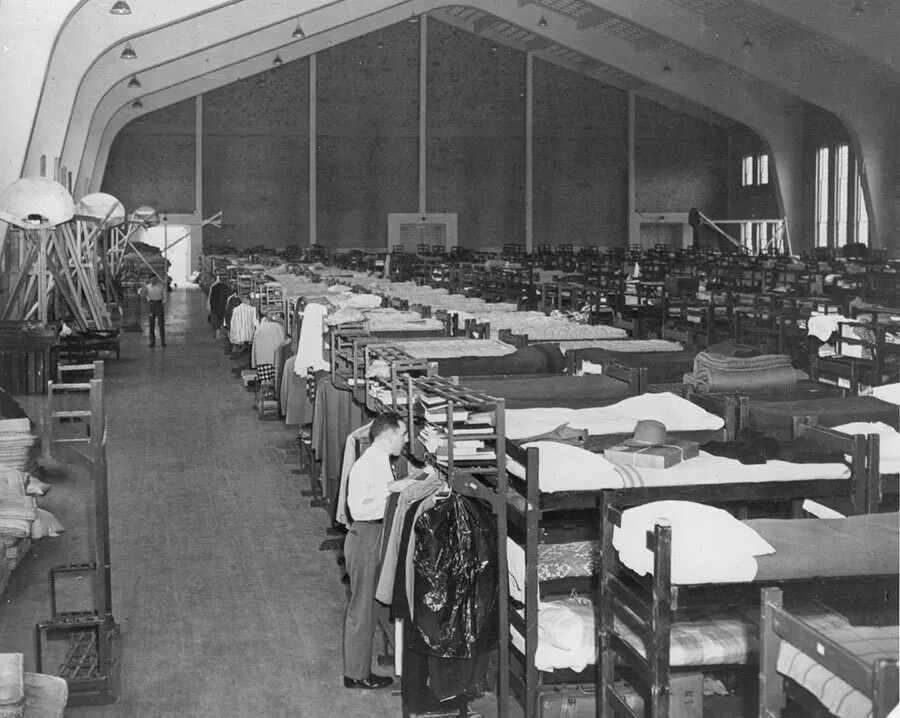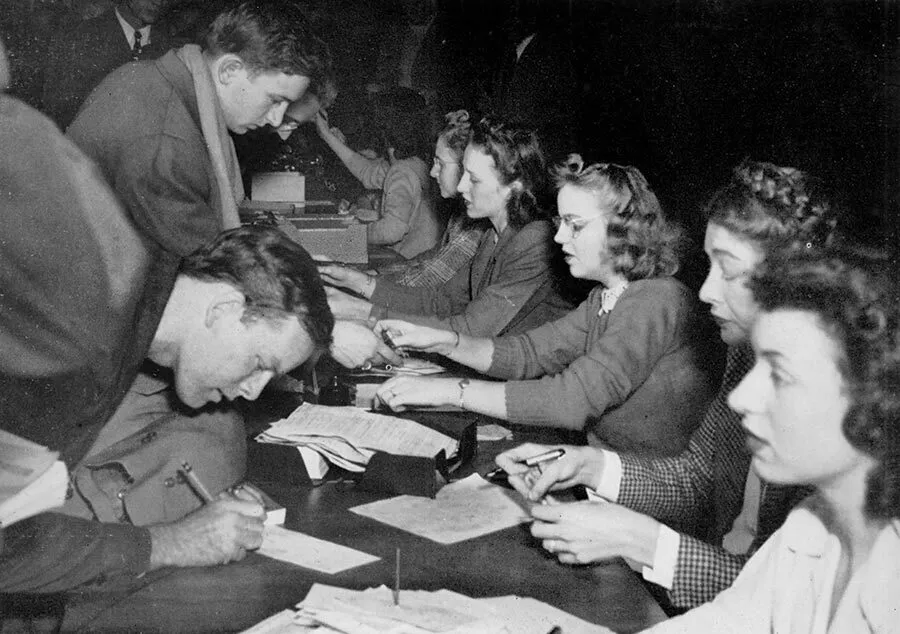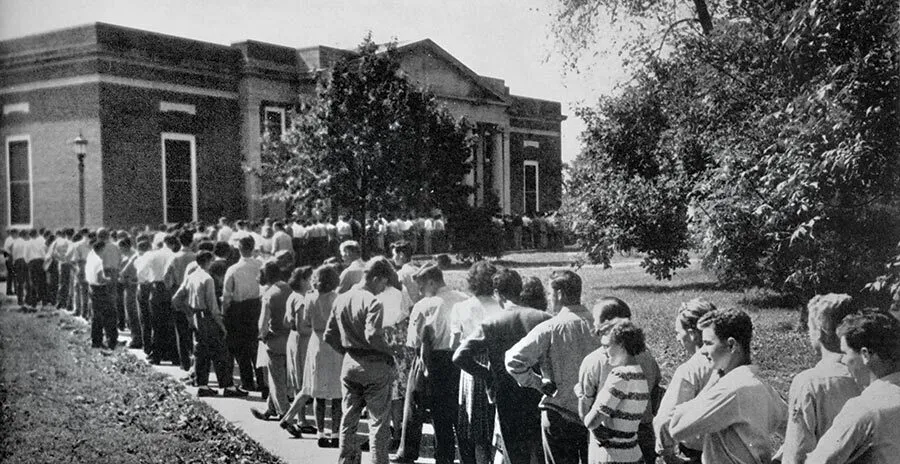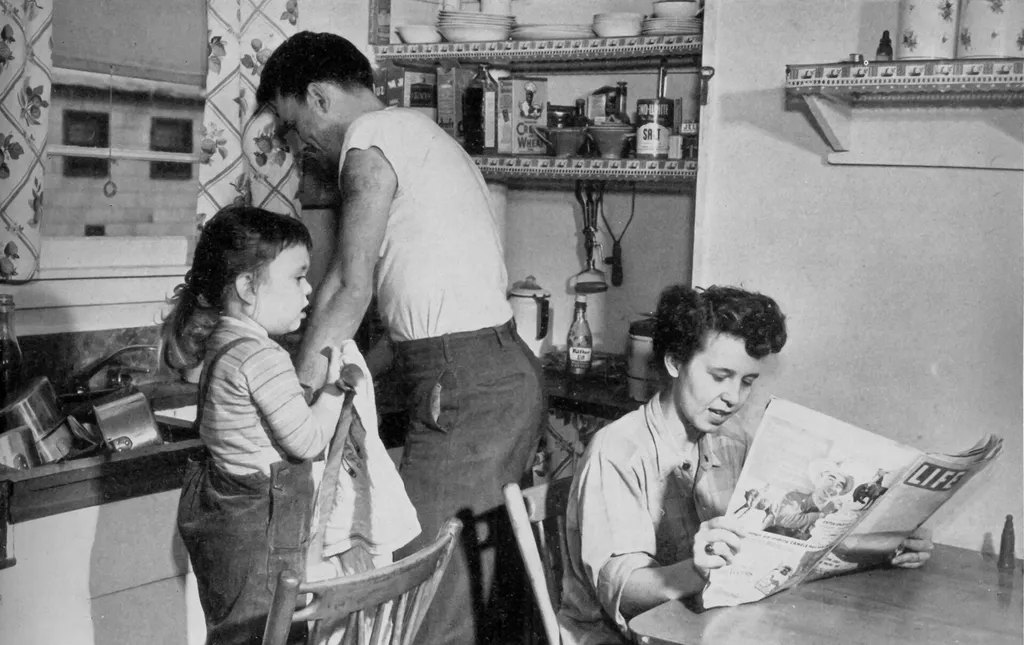- September 30, 2021
- By Annie Krakower
Pouring another 7,300 students onto UMD’s campus would be a noticeable bump even to today’s enrollment of 40,000-plus. But 75 years ago, that total left the campus positively teeming with Terps.
Starting in 1946, a year after World War II’s end, the population here exploded, tripling from the previous year and almost quintupling from two years prior. That was thanks in large part to the 1944 GI Bill, which, among other benefits, covered college tuition for returning veterans. (Of the record 7,300 enrolled Terps in 1946, 4,400 had served.)
“There’s more of everything: more men, more staff, more classes, more crowds at dances and games, more clubs, more fraternity and sorority members, more dormitories, and more studying,” read a Diamondback article from that year.
With campus a skeleton of what it is now—its heart back then was Morrill Quad, and a primitive McKeldin Mall was still known as the Quadrangle—UMD scrambled to accommodate the influx, getting creative to house, teach and engage its suddenly plentiful population in university life.
MAKE-DO DIGS
The wave of vets found no vacancy in UMD’s existing residence halls, which simply couldn’t fit all those returning GIs. The solution? Cram around 700 beds into Reckord Armory. The makeshift housing featured one clothes rack for every four Terps, according to The Diamondback, and a temporary post office. Additionally, for returning servicemen residing with their families, the university quickly put up temporary living quarters.
ACADEMIC AUGMENTATIONS
Residence halls weren’t the only places on campus experiencing overcrowding. The university also had to alleviate cramped academic areas, eventually converting the gym and National Youth Administration shop, where students could earn work experience, into classrooms. UMD also added 19 faculty members and even held some classes on Saturdays to address the surge.
PACKING THE STADIUM
For diehard Terp fans, the enrollment boom sparked worries of an overcrowded Ritchie Coliseum that might cause them to miss the big basketball game or boxing match. On the intramural side of sports, though, the population boost meant more participants, better teams and more organized leagues.
VIGOROUS VETS’ CLUB
The rush of returning servicemen quickly distinguished the Veterans’ Club as UMD’s largest student organization. With the mission of helping GIs transition into the college routine, the club tackled projects like planning a food commissary, running a tutoring service and sponsoring a variety show.
CAMPUS CONSTRUCTION ZONE
Seeking a more permanent solution, UMD rushed along its government-aided, multimillion-dollar plan to add a whopping 32 buildings, including a dining hall, men’s and women’s residence halls, a new stadium and the Glenn L. Martin Wind Tunnel. “And so construction barricades, razing buildings brick by brick, steam shovels, digging, tool houses and detours on the lanes and walks are all familiar on the scene of campus life (in) 1946,” The Diamondback wrote.

A student hangs clothes amid the rows of bunk beds in the Armory, also known as the Veterans Barracks Unit, where a surplus of male students stuffed into makeshift housing.

The flurry of students registering for classes in 1948 paid tuition and fees totalling $208 for the academic year.

Before the postwar building boom on campus, the enrollment boom meant long lines to enter LeFrak Hall, the sole campus dining hall.

A student veteran and father, center, washes dishes with his daughter, left, while his wife reads Life magazine at the table. For returning servicemen living with their families, UMD put up temporary living quarters.
Topics
Campus & CommunityTags
HistoryUnits
University Libraries